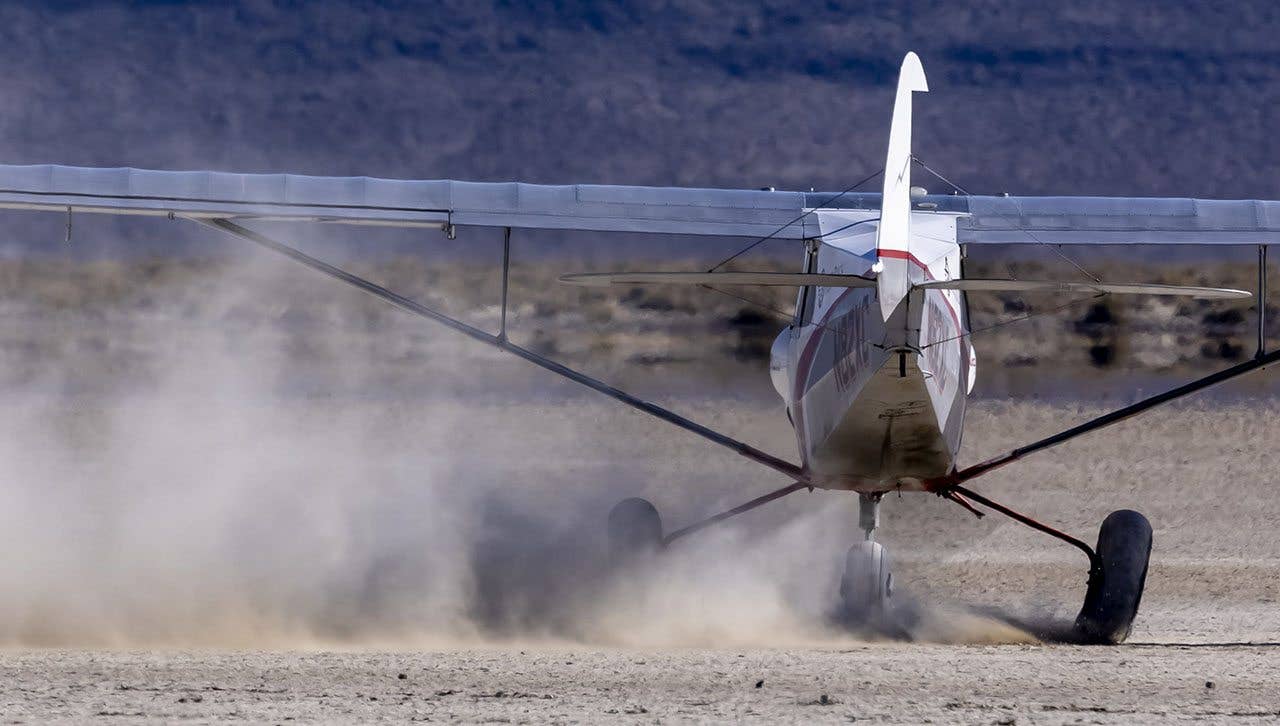A STOL Fatality and Why We Should Never Ask the FAA for More Regulation
After a fatal crash in Nebraska, STOL events are under the microscope. Let’s hope the FAA doesn’t decide to help.

Photo by Jim Raeder
Russ Niles, the talented writer for popular online aviation news AVweb, wrote a piece published in the daily newsletter today seemingly calling for the FAA to step in and regulate STOL activities. Russ, with whom I disagree about twice a year, got this one wrong. The FAA won't solve the problem. The people who run these contests can solve the problem, and they're already at it.
The tragic death of a popular backcountry flyer last week at an impromptu STOL competition in gusty-wind conditions has prompted a good deal of soul-searching among many in aviation. It sometimes happens in the wake of a particularly emotionally jarring crash, and this one was bad. Tom Dafoe, a 45-year-old aviation sales professional, was apparently doing S-turns behind a slower plane on short final when the Cessna 140 in which he was flying solo stalled at an estimated 300 feet above the ground and spun. A spin at that altitude is thought to be unrecoverable. Dafoe's vintage taildragger impacted nose first. The crash was witnessed by dozens of people, and it was captured on video---we will not be sharing that video, by the way.
Niles' point is that such crashes could be prevented if the participants were better trained and if the events themselves were better regulated. Maybe. But there's a cost for everything, and one could make the argument that this kind of crash, a stall spin while maneuvering to land, is common in aviation ,period. Should pilot training requirements be increased to help prevent such crashes? Maybe require 40 hours before solo and 250 hours before one qualified for a Private Pilot ticket? Of course not. We all know that learning to fly is already too expensive and that much of the learning we do as pilots is on the job. It's been that way ever since Orville taught himself to fly a powered plane.
And STOL pilots get plenty of training. Most event organizers require it of their participants, and that's how it should be. But as in all things aviation, we accept a certain level of risk every time we fly. We already know that some kinds of flying have greater risk built in than others do. STOL competitions are probably riskier than shooting touch-and-goes at the old field, but the folks behind the stick are also generally far more proficient than your typical weekend warrior. I don't know many STOL contest organizers, but I know that the folks who run Valdez and the High Sierra Fly-In are staunch safety advocates.
Besides, not all STOL events are created equal. Few people outside the backcountry community are aware the STOL/Drag format is the answer to the problems that Niles calls out. In a STOL/Drag competition, the planes stay low, flying largely in ground effect, a short out-and-back course with a landing and a turnaround at the middle of it. There are wrecks in STOL/Drag, but it's rare for the pilot to get anything beyond banged up and dinged in the checkbook.
It is true that STOL contests that are set up to require low level, low-speed maneuvering raise the risk quotient considerably, especially for pilots who are not at the top of their game.
But inviting regulation and pilot validation by the FAA is the wrong way to do this. The whole segment, which has given light general aviation a considerable shot in the arm over the past five or 10 years, is different. Safety is a huge consideration, but so too is freedom--- the freedom to accept risks that you or I might not agree to. Organizers can and should oversee their events with an eye to safety, but by and large, they are already doing that.
The fatal crash in Nebraska last week was traumatic for the family and many friends of Tom Dafoe, not to mention to many folks in aviation who are armchair afficionados of backcountry flying. No one wants anyone to get hurt, ever. But personal flying has always been and always will be a balance between risk and reward. Finding that balance should remain the pilot's job so long as everyone knows the risks involved.

Subscribe to Our Newsletter
Get the latest Plane & Pilot Magazine stories delivered directly to your inbox






